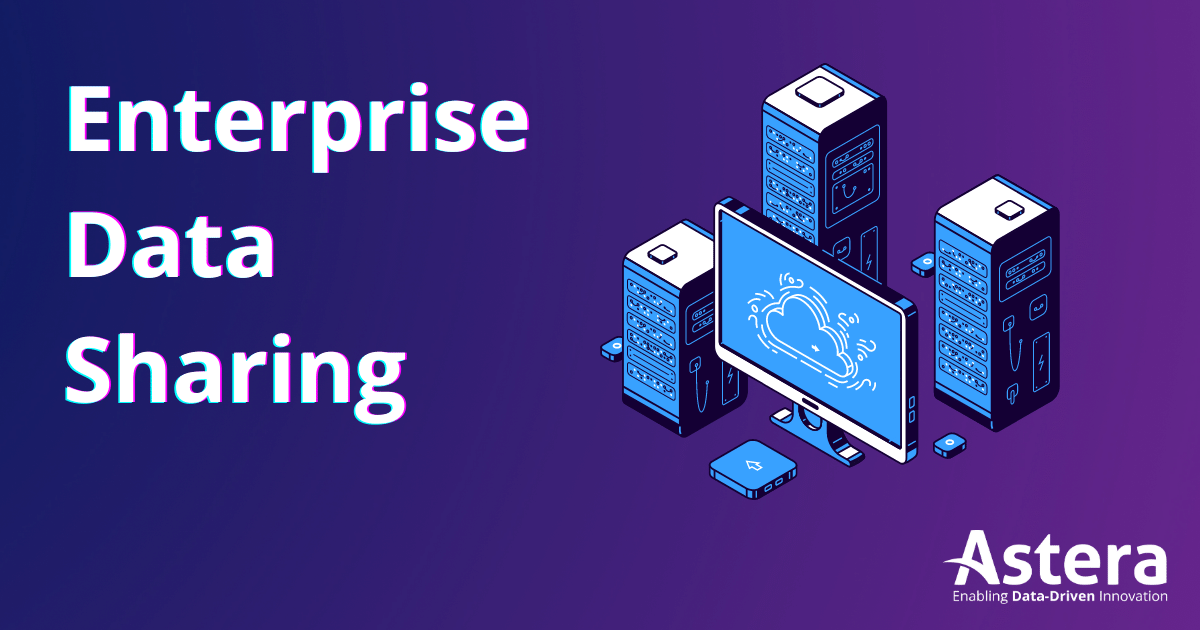
The Importance of Enterprise Data Sharing for Effective Collaboration and Innovation
Collaboration and innovation through enterprise data sharing are essential for organizations to achieve sustainable growth and stay competitive in today’s fast-paced business environment. Gartner states, “Data and analytics leaders who are able to create a data-driven culture over a data-siloed culture drive more data and analytics value for their organizations.”
While McKinsey reports that data-driven organizations are 23 times more likely to acquire customers, six times as likely to retain those customers, and 19 times as likely to be profitable. It is evident that enterprise data sharing can significantly impact an organization’s success.

What is Enterprise Data Sharing?
Enterprise data sharing refers to sharing data across departments and business units within an organization. This allows organizations to integrate data from various sources and gain insights otherwise trapped in silos.
Data silos are data sets that are not easily accessible or shared with other parts of an organization. They can lead to inefficiencies, redundant work, and missed opportunities for collaboration and innovation. Enterprise data sharing can help eliminate data silos and promote cross-departmental collaboration.
Imagine a scenario where someone from the marketing team has a brilliant idea for increasing lead generation but requires crucial data from the sales team to fine-tune their tactics – this is where the power of data sharing lies. Without data sharing, the marketing team’s idea for increasing lead generation would be significantly hindered. The marketing team would not have access to the necessary data from the sales team to target the right audience effectively and achieve the desired results in lead generation. Businesses can break down invisible barriers and foster an adaptive, agile culture by creating a system that allows for seamless data integration across departments.
Benefits of Enterprise Data Sharing
Collaboration and data sharing among different departments lead to increased efficiency, better decision-making, improved productivity, enhanced innovation, and increased revenue. When teams work together, they can streamline processes, reduce duplication of efforts, and make faster decisions. This enables organizations to comprehensively view their business, identify trends, and make data-driven decisions to help them achieve their goals. Let’s have a look at the benefits of data sharing:
Increased Efficiency
First and foremost, let’s talk about the undeniable efficiency that comes with data sharing. By allowing professionals access to large datasets, the time spent on data processing and analysis drops significantly. Collaboration among different departments can help streamline processes and reduce duplication of efforts.
For instance, a company’s HR and IT departments might collaborate to streamline the onboarding process for new employees. By sharing company data and automating certain steps, they can cut the time to onboard new hires in half, increasing efficiency.
Better Decision-Making
Sharing data across departments enables organizations to comprehensively view their business, identify trends, and make data-driven decisions. Imagine a healthcare organization integrating customer data from its medical, billing, and insurance departments to identify patients at high risk of readmission.
Integrating data from different departments within the organization can provide a comprehensive view of a patient’s health status, medical history, insurance coverage, and billing information. By combining this data, healthcare organizations can identify patients at high risk of readmission and create personalized care plans to improve their health outcomes. In addition, through data sharing, healthcare organizations can identify opportunities for process improvement, resource allocation, and cost savings, ultimately leading to better patient care and improved operational efficiency.
Improved Productivity
Collaboration and data sharing enables teams to work together more effectively, improving productivity. For example, a marketing agency might implement a collaboration tool that allows its creative, account management, and strategy teams to work together more effectively. By breaking down data silos and improving communication, they can complete projects faster, resulting in improved productivity.
Enhanced Innovation
Collaboration among departments can lead to new ideas and innovative solutions to complex problems. By accessing diverse data, you can foster new ideas and methods that may never have come to light in a more isolated environment. Let’s take a tech company that creates a cross-functional team that includes employees from its engineering, design, and marketing departments to develop a new product. By leveraging each team’s expertise and working collaboratively, they can create a product that exceeds customer expectations and generate more revenue.
Increased Revenue
Economically speaking, data sharing reduces costs by eliminating redundancy. Instead of multiple research groups investing their resources into building the same datasets. They can pool their knowledge and share a single copy. This aspect of data management can also promote companywide cost management as it makes storing data easier.
Cross-departmental collaboration and enterprise data sharing can increase revenue by enabling organizations to make better decisions, streamline processes, and identify new business opportunities. For example, a retail company might integrate the data from its customer service, marketing, and sales departments to create a more personalized shopping experience for customers. By sharing data and insights across departments, they can identify new business opportunities and increase revenue.
Improved Transparency
Increased transparency is one of the most significant benefits of implementing enterprise data sharing systems. With an open flow of information, individuals become empowered to harness insights from various sources and develop innovative solutions that drive growth. By sharing data across departments, everyone has access to the same information, and there are no secrets or hidden agendas. This can help build employee trust and improve communication, ultimately leading to better outcomes.
Eliminates Data Silos
Enterprise data sharing helps eliminate data silos, providing a unified view of the business landscape. Access to this “bigger picture” view enables teams with different expertise to synthesize their knowledge and create game-changing strategies.
It’s like having puzzle pieces scattered across the floor. Only when you fit them together can you truly see the complete image. A unified business view can catalyze efficiency, paving the way for faster and more informed decision-making.
Challenges in Implementing Enterprise Data Sharing
Of course, data sharing isn’t all sunshine and rainbows. There are still some challenges to overcome, such as data privacy concerns and technological limitations of legacy systems for this practice.
Siloed Data
One of the biggest challenges in implementing enterprise data sharing is siloed data. Data sources may exist in different systems or formats across departments, making it difficult to integrate and share.
This can lead to duplication of efforts, inaccurate or incomplete data, and difficulty in making informed decisions. For example, a company’s marketing department may use a different customer database than the sales department. This makes it difficult to track customer interactions and preferences.
Data Security and Privacy Concerns
Data security and privacy are crucial concerns regarding enterprise data sharing. There may be sensitive or confidential data that unauthorized personnel should not access. Organizations must protect data through proper security measures such as access controls, encryption, and monitoring. For example, a healthcare organization may need to protect patient data from unauthorized access.
Technology Limitations
Technology is a key enabler of cross-departmental collaboration and enterprise data sharing, but it can also pose challenges. Organizations may have outdated or incompatible systems, making integrating and sharing data difficult. Additionally, there may be data security and privacy concerns when using cloud-based solutions. For example, a company may have legacy systems that cannot integrate with newer data analytics platforms.
Conclusion
Believe it or not, data sharing is a game-changer on many levels. It may seem like a small step, but it has significant implications for science, economy, and technology. Ultimately, by sharing data, we are unlocking limitless possibilities and paving the way for a more connected world. So, let’s embrace this opportunity and watch the magic of data sharing unfold before our eyes.
 Astera AI Agent Builder - First Look Coming Soon!
Astera AI Agent Builder - First Look Coming Soon!


